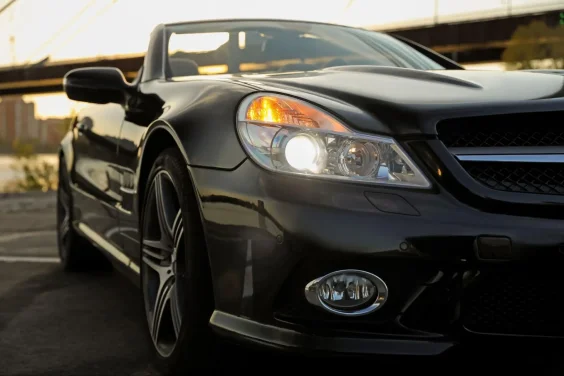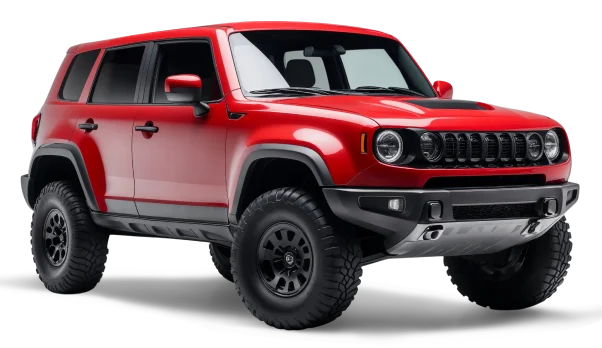Pueblo’s hail season, like the rest of Hail Alley, extends roughly half of the year from May until September. However, some of the most recent severe events have occurred outside of the usual June and July peak or near the end, including:
Aug. 13, 2024: Hail reached sizes over two inches, about the size of a lime, and caused significant damage to vehicles and property throughout town.
July 13, 2023: Precipitation reached nearly four inches in diameter, roughly the same as a softball, causing even more vehicular and property damage.
For local drivers, the headaches come twice: once when they see what has happened to their vehicles and again when they try to figure out how to get it repaired by a local shop, hopefully covered by their car insurance policy.
Knowing how to navigate both paintless dent repair (PDR) and conventional repair methods, as well as dealing with insurance companies and submitting claims, are crucial to ensuring that your vehicles are repaired, reduce the risk of future damage and are all done with minimal out-of-pocket expense.
Understanding Hail Damage and PDR
Basics of Hail Damage
Pueblo’s location in the shadow of the Rockies provide the geography required for significant hail storms: nearby mountain ranges provide updrafts that collide violently with thunderstorms coming from the plains. It, along with the rest of “Hail Alley”, suffer the highest rate of hail and hail-related vehicle damage in all of North America.
Since the precipitation is solid ice and falling from the sky, damage can be extensive for the average car, truck or SUV: dents, cracked paints and broken windows are common results. However, even small dents and damage can cause long-term effects: dents often affect the protective paint coating and can lead to rust. Larger hailstones can cause unseen body or frame damage that, left undetected, can cause drivability issues.
Fixing Hail Damage with PDR
Paintless dent repair refers to a collection of methods that auto body shop technicians use to reform a body panel after it has been struck by a hard object. There are many different tools that can be used, and they often vary in terms of how much bend can be applied, what material is used in the body panel, and so forth. For many dents and small body concerns, PDR can be an affordable option.
When PDR Makes Sense for a Vehicle
| Dents are relatively small | While sizing dents is usually done via estimation, roughly speaking, dents that are not visible until within a few feet of a vehicle surface are prime candidates. |
| The paintwork is mostly or completely intact | The most important criteria for most PDR shops is the condition of the paint and clear coat. Once the coat has been breached, it opens up the possibility for rusting and other damage, like from the harsh UV radiation that Pueblo gets. |
| The dents do not form at critical bends or joints in the bodywork | While a car or SUV’s body panel may be strong in the general sense, there are certain points that are weaker than others. Depending on the material used in construction and where the dent is on the panel, it may not be possible to use PDR without potentially damaging the panel. |
Using Traditional Methods for Hail Damage
While PDR has skyrocketed in usage because of its ease of use, ability to be used on a variety of materials and generally lower cost, it is not the best solution for major damage or repairs that run the risk of damaging panels using PDR methods.
In this case, it makes sense to work with a Pueblo autobody shop that has experience both with PDR techniques as well as body panel repairs and especially paintwork. When it comes to maintaining the integrity of the vehicle body, experienced technicians can ensure that cars not only look just as good as they did beforehand, but are equally protected from the harsh sun and other damaging elements of Pueblo’s climate.
Hail Damage Insurance Basics
Although specific agents of insurers throughout Pueblo, CO have significant experience with hail-specific damage, the area of a policy that covers what will and won’t be repaired, and for how much, falls under the comprehensive coverage section. This is important for several reasons:
- All states, including Colorado, require liability coverage to help defray the costs of treating injuries sustained in a car accident. These usually consist of three numbers separated by slashes like, $15,000/$30,000/$15,000. This also happens to be the minimum coverage required by Colorado law: up to $25,000 for any one person’s injuries, $50,000 for all injured parties and $15,000 for any property damage, including the vehicles involved.
- There is no legal requirement for vehicle policies to include collision coverage, but the majority of people obtain some form of it. After paying a deductible (usually ranging from $250-$750), the insurer agrees to pay for the remainder of the costs of repairing a vehicle involved in a collision.
Since comprehensive coverage is optional, some people choose to either opt for higher deductibles to reduce costs or to go without comprehensive coverage completely for older vehicles. This choice substantially affects what the total out-of-pocket cost for hail damage repairs will be for a vehicle owner.
As an example, take a driver who buys the minimum liability coverage, gets collision coverage with a $750 deductible and comprehensive coverage with a $750 deductible. Damage from a mild hailstorm might only cost $400 to fix. All of that must be paid for out of pocket.
Filing a Hail Damage Insurance Claim
No matter the scale of damage to your vehicle, the steps to take to ensure that your insurer will pay for as much of the repairs as possible is the same:
| Inspect Your Vehicle for Damage and Document with Photos/Video |
|---|
| The most important step in ensuring a quick and painless claims process is documenting what a vehicle looks like prior to taking it in for repairs. Insurance companies may look for signs that damage occurred because of a prior collision, or whether the damage is old enough that it could have come from a previous event. Photos are usually the safe bet, but for PDR and hail insurance claims, video can help provide context, like where a specific dent is on a panel or in relation to the vehicle as a whole. |
| Notify Your Insurer and Begin Filing a Comprehensive Claim |
|---|
| Even if you are unsure which repair shop you plan on using, filing a claim as quickly as possible helps in several ways. One, it ensures that the evidence arrives as close to the date of the event as possible. It also reduces the likelihood that your claim will be held up for processing with similar ones in the case of a large storm affecting numerous vehicles. |
| Schedule an Appointment with an Adjuster if not using a Preferred Repair Shop |
|---|
| Insurance policy holders have the option of choosing any repair shop they want to use for hail damage and PDR services. If they decide to go out of network, it’s important to get an adjuster from your insurer who will set a max limit on what repair costs they will cover. |
| Choose a Repair Shop (Preferred or Non-Preferred) |
|---|
| While experience performing repairs is usually the number one consideration, working with a collision shop like Pro-Masters in Pueblo that is a preferred shop for many insurers can offer several benefits. They can expedite the process of submitting claims and working with adjusters, perform repairs that offer insurer-backed warranties and can even help with common needs like rental cars. |
Cost of Hail Damage Repair in Pueblo, CO
Hail damage estimates are not a completely exact science. Generally speaking, however, adjusters and repair shops base their pricing on the following factors:
- Size of the dents in question – These can range anywhere from a fraction of an inch to several inches long, depending on the projectile size and material used in the body panel’s construction
- Level of repair required – Paintless dent repair, where the underlying clear coat and paint are not affected, is generally significantly cheaper.
Paintless Dent Repair Costs
Per Dent Costs
| Small Dents | $30-45 |
| Medium Dents | $45-55 |
| Large Dents | Can range over $75 per impact |
Total Repair Costs
Minor Damage: Fixing a couple small to medium size dents might only run a vehicle owner a few hundred dollars.
Significant Damage: Extensive hail impacts that affect windows, panels made of specialized materials, etc. can range into the thousands of dollars to complete repairs.
Traditional Dent Repair Costs
For dent repair that also requires careful sanding, painting and the use of bonding materials, costs can increase significantly. They may range from $125 to more than $300 per dent, depending on the body material and several other factors.
Learn More About PDR and Hail Damage Insurance Claims at Pro-Masters
Pro-Masters Auto Collision & Hail Center has been serving Pueblo for more than 20 years. Not only are our technicians ASE- and ICAR-Gold certified to properly handle significant body damage, but we stay up to date with the latest in PDR options to save our neighbors time and money getting hail damage fixed.
As a preferred shop for many insurers, we can offer low- or no-deductible hail damage repair to maximize out-of-pocket savings for our customers, and help save an appointment with the adjuster for many insurance companies. Learn more about your options and how we can help by filling out the short form for a complimentary assessment or calling us at 719-782-7919






